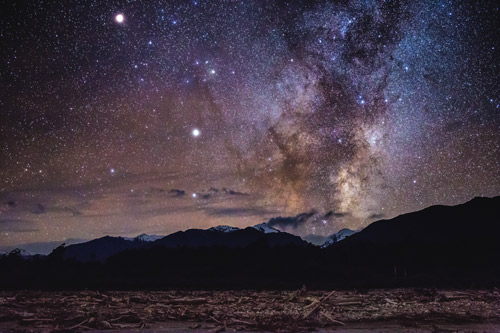Using AI to control energy for indoor agriculture
30 September 2024
Published online 31 January 2018
TRAPPIST-North is a first foray in exploration of space for the country.

Operated by scientists and engineers at the Oukaïmden Observatory, the TRAPPIST-North — a 60 cm optic robotic telescope — complements the work of its Belgian counterpart TRAPPIST-South located in Chile, in exhaustively monitoring large sections of the night sky in search for exoplanets — planets orbiting stars outside of our solar system. The telescope also aids in the study of comets orbiting the sun.
“The primary motivation for the search for extrasolar planets is identifying how frequent habitable worlds and life may be within the Galaxy [… and] to better know about the formation of our own solar system,” says Zouhair Benkhaldoun, director of the Oukaïmden Observatory and president of the Moroccan National Committee for Astronomy (MNCA).
In May 2016, combined data from the telescopes contributed to the identification of TRAPPIST-1, an entire planetary system comprised of an ultra-cool red dwarf star orbited by seven exoplanets.
The planets are Earth-sized, and three are within the habitable zone of the star and may contain liquid water. This is the largest planetary system discovered outside our solar system to date and was published in the journal Nature.1 2
The robotic telescope will also participate in a more ambitious project, SPECULOOS, which aims to search for Earth-sized planets in the nearest 1000 ultra-cool stars, and red dwarfs in the next 10 years.
A year after aiding in discovering seven potentially habitable planets, TRAPPIST-North continues to produce, according to the observatory’s director.
“In just one year we participate in the discovery of the TRAPPIST-1 system and we are about to confirm at least a dozen of exoplanet candidates,” says Benkhaloun.
The observatory is part of bigger plans by Morocco to have a larger contribution towards international efforts in astronomy and planetary science.
To this end, the Arab Astronomical Society (ArAs) founded in Morocco is working on establishing collaborations with institutions outside of the Middle East such as one between the Cadi Ayyad University, Marrakesh, and the Harvard-Smithsonian Center for Astrophysics (CfA) for exchange of PhD students.
“Space research is still embryonic in our region,” says Benkhaldoun. “Now, with the establishment of the Arab Astronomical Society (ArAS) and its School for Astrophysics, we work to build a new generation of Arab scientists by connecting Arab universities with those in other regions.”
doi:10.1038/nmiddleeast.2018.12
Stay connected: